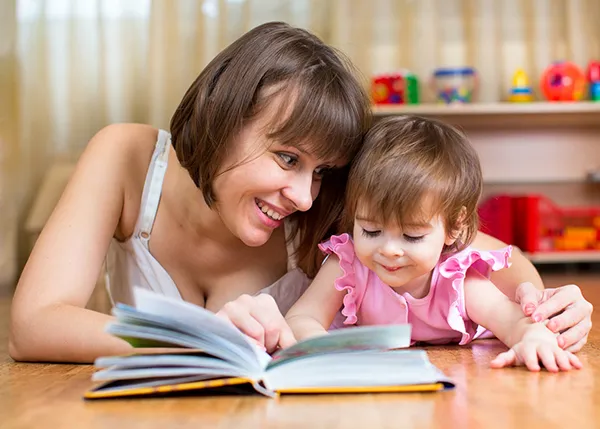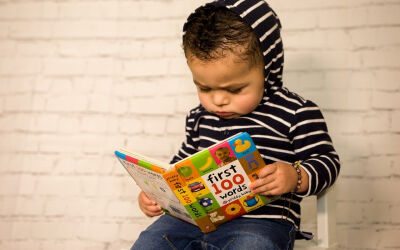
In today’s fast-paced world, it can be challenging to find time to connect with our families, especially with our children. We are always on the go, running errands, working, and taking care of daily responsibilities. However, it’s essential to carve out some quality time with our families, and one of the best ways to do that is by reading together as a family.
Reading together as a family has numerous benefits that go beyond just improving literacy skills. In this article, we will explore the importance of shared reading, the benefits it has on children’s development, and how it can positively impact your family’s overall wellbeing.
The Importance of Reading Together as a Family
Reading together as a family is an excellent way to spend quality time together. It allows us to connect with our children and create lasting memories that they will cherish for years to come. Moreover, shared reading can help instill a love for reading in our children, which is a crucial skill that will benefit them in all aspects of their lives.
When families read together, they also create a shared experience that can help build stronger relationships. Sharing stories, discussing characters, and learning new things together can strengthen the bond between parents and children. Additionally, reading can be a relaxing and enjoyable activity that can help reduce stress and promote overall wellbeing.
Benefits of Shared Reading
- Improved Literacy Skills: Reading together as a family can help improve children’s literacy skills, such as vocabulary, comprehension, and reading fluency. Children who are exposed to a wide range of books and reading materials tend to perform better academically.
- Enhanced Cognitive Development: Reading can help develop critical thinking and problem-solving skills. When children read, they are exposed to new ideas, concepts, and perspectives, which can help expand their knowledge and creativity.
- Improved Language Development: Reading can help children develop better language skills, including grammar, syntax, and writing. Children who are exposed to a variety of books and reading materials tend to have better writing skills and perform better on language-based tasks.
- Increased Empathy and Understanding: Reading stories can help children develop empathy and understanding for others. It exposes them to different perspectives, cultures, and experiences, which can help them develop a broader worldview.
The Impact of Shared Reading on Children’s Development
Shared reading has a significant impact on children’s development, both academically and emotionally. Here are some of the ways shared reading can positively impact children’s development:
- Improved Academic Performance: Children who are read to at home tend to perform better academically than those who are not. Reading together as a family can help improve literacy skills, enhance cognitive development, and increase academic achievement.
- Enhanced Emotional Development: Reading together as a family can help children develop emotionally. Reading stories can help children understand their feelings and emotions, develop empathy for others, and improve their communication skills.
- Strengthened Parent-Child Relationships: Shared reading can help build stronger relationships between parents and children. It creates a shared experience that can bring families closer together, promoting a sense of belonging and connectedness.
Tips for Making Shared Reading a Success
- Make it a Routine: Set aside a specific time each day or week for shared reading.
- Let Children Choose: Allow children to choose books that interest them. This can help promote a love of reading and keep children engaged.
- Make it Interactive: Encourage children to ask questions, make predictions, and discuss the story. This can help enhance comprehension and critical thinking skills.
- Use Props: Use props or costumes to bring the story to life. This can make the reading experience more engaging and fun.
- Be Enthusiastic: Reading with enthusiasm can help make the experience more enjoyable for children. Use different voices for different characters and emphasize key words and phrases.
Conclusion
Reading together as a family is an excellent way to connect with our children, promote literacy skills, and enhance overall wellbeing. Shared reading can help build stronger relationships, improve academic performance, and foster emotional development. By making shared reading a routine, allowing children to choose books, and making it interactive and fun, families can create a positive and enjoyable reading experience that will benefit children for years to come. So why not start reading together as a family today? Explore our bookshelf to find the best books to read together with your child!
FAQs
1. How often should we read together as a family?
It’s recommended to read together at least 20 minutes a day, but any amount of shared reading is beneficial.
2. What if my child doesn’t enjoy reading?
Try to find books that interest your child and make the experience enjoyable. You can also try reading aloud to your child, which can help instill a love of reading.
3. Can shared reading help with language development in children who speak multiple languages?
Yes, shared reading can help improve language skills in all languages spoken by the child.
4. Is it okay to read the same book multiple times?
Yes, reading the same book multiple times can help enhance comprehension and reinforce vocabulary.






